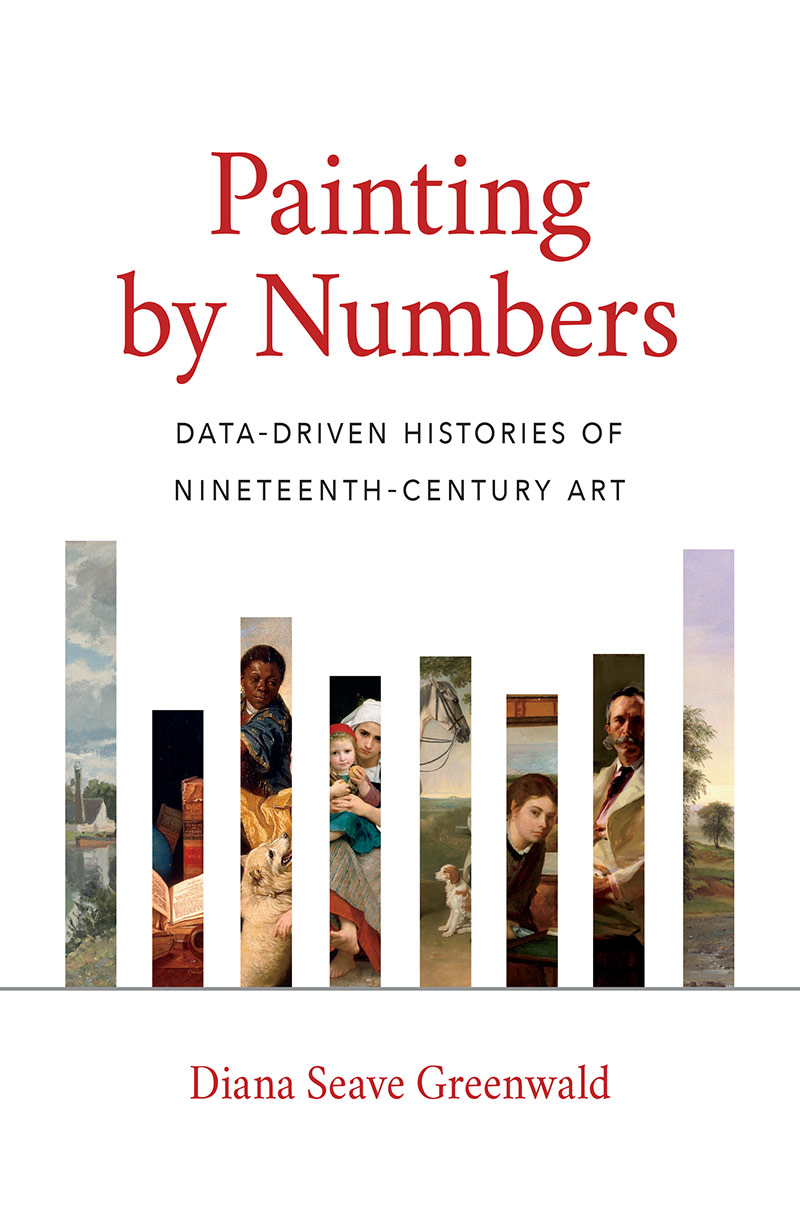Reviews
“Greenwald’s new book, Painting by Numbers: Data-Driven Histories of Nineteenth-Century Art, summarizes her analyses of over 500,000 paintings from France, the United Kingdom, and the United States with the express motivation of examining whether long-held interpretations of painting trends hold up under quantitative scrutiny. Many do not. ”
“Painting by Numbers is a methods book. It’s careful and systematic…. It leaves audiences to wonder what work the book will inspire as other researchers draw from the quantitative foundation Greenwald has established.”
Lydia Pyne, Hyperallergic“This groundbreaking, thought-provoking book employs datasets and socioeconomic analytical tools to tell superbly documented and compelling stories about the artists, artworks, patrons, and markets that drove artistic production and consumption in England, France, and the United States during the long nineteenth century. The ease with which Greenwald deploys her statistics should encourage broader use of these investigative techniques.”
Eleanor Jones Harvey, author of Alexander von Humboldt and the United States: Art, Nature, and Culture“Paintings are motionless, but Painting by Numbers shows that nineteenth-century art was shaped by the dynamics of distance and time. Domestic duties constrained women’s art in the United States, cheap railway travel influenced bucolic painting in France, and the British Empire was depicted as picturesque, sometimes by artists who had never even been there. All of this and more is measured quite precisely in this innovative and engaging book.”
Avner Offer, coauthor of The Nobel Factor: The Prize in Economics, Social Democracy, and the Market Turn“Painting by Numbers brings together digital research and econometric tools to identify patterns that have not been previously visible in the exhibition of nineteenth-century artworks. Greenwald’s data is fascinating and her argument, which reconsiders peasant painting, women artists, and imperialism, is an important one.”
Wendy Katz, author of Humbug!: The Politics of Art Criticism in New York City’s Penny Press“Satisfying and eminently readable, Painting by Numbers offers new insights on the broad contours of U.S., French, and British nineteenth-century art history and new possibilities for digital humanities in art history more generally. Greenwald’s book is a provocative shake-up of the canon and successfully makes the case that both the quantitative and qualitative are fundamental to a truly critical social history of art.”
Paul B. Jaskot, director of Duke University’s Wired! Lab for Digital Art History and Visual Culture
